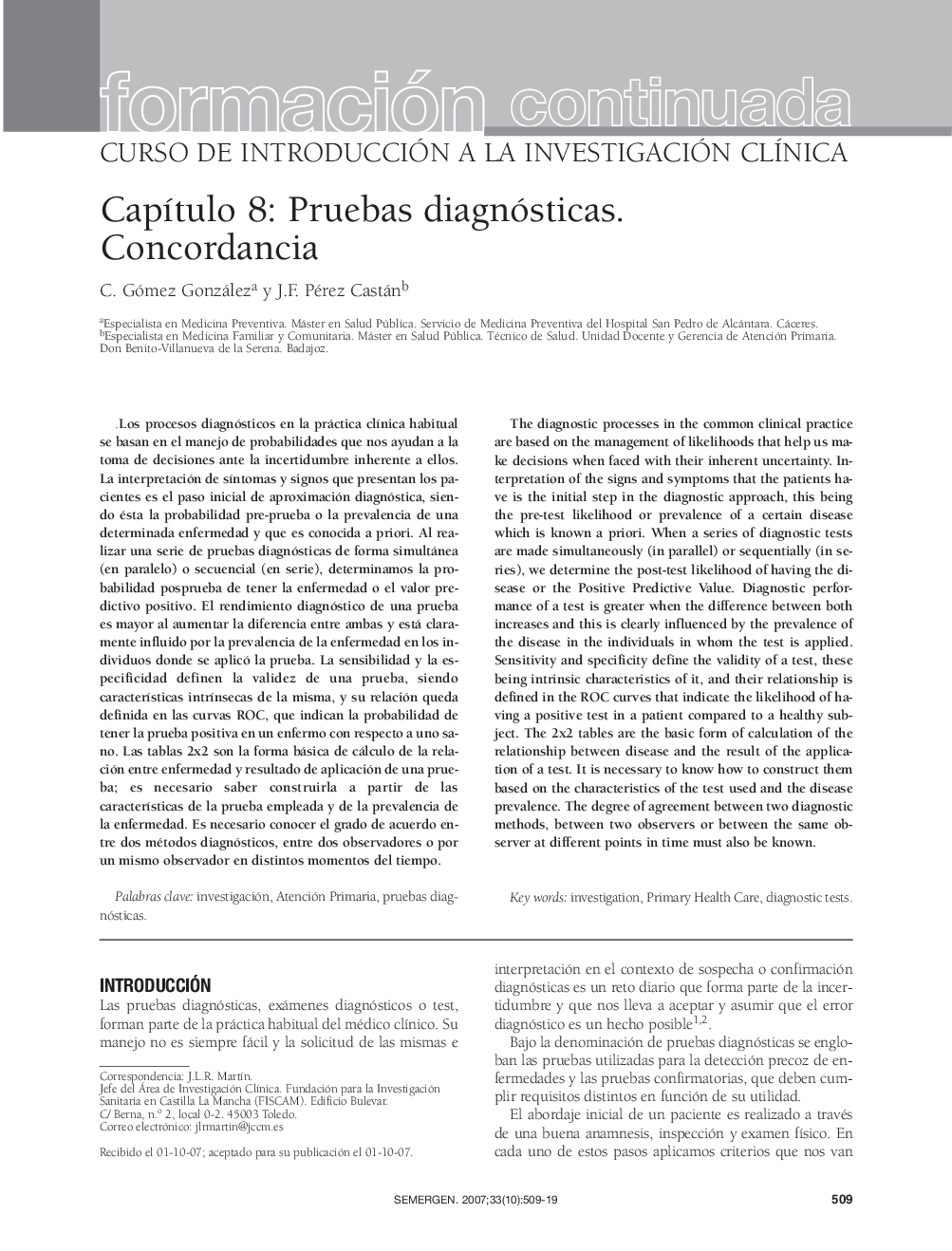| کد مقاله | کد نشریه | سال انتشار | مقاله انگلیسی | نسخه تمام متن |
|---|---|---|---|---|
| 3835957 | 1247427 | 2007 | 11 صفحه PDF | دانلود رایگان |

Los procesos diagnósticos en la práctica clÃnica habitual se basan en el manejo de probabilidades que nos ayudan a la toma de decisiones ante la incertidumbre inherente a ellos. La interpretación de sÃntomas y signos que presentan los pacientes es el paso inicial de aproximación diagnóstica, siendo ésta la probabilidad pre-prueba o la prevalencia de una determinada enfermedad y que es conocida a priori. Al realizar una serie de pruebas diagnósticas de forma simultánea (en paralelo) o secuencial (en serie), determinamos la probabilidad posprueba de tener la enfermedad o el valor predictivo positivo. El rendimiento diagnóstico de una prueba es mayor al aumentar la diferencia entre ambas y está claramente influido por la prevalencia de la enfermedad en los individuos donde se aplicó la prueba. La sensibilidad y la especificidad definen la validez de una prueba, siendo caracterÃsticas intrÃnsecas de la misma, y su relación queda definida en las curvas ROC, que indican la probabilidad de tener la prueba positiva en un enfermo con respecto a uno sano. Las tablas 2x2 son la forma básica de cálculo de la relación entre enfermedad y resultado de aplicación de una prueba; es necesario saber construirla a partir de las caracterÃsticas de la prueba empleada y de la prevalencia de la enfermedad. Es necesario conocer el grado de acuerdo entre dos métodos diagnósticos, entre dos observadores o por un mismo observador en distintos momentos del tiempo.
The diagnostic processes in the common clinical practice are based on the management of likelihoods that help us make decisions when faced with their inherent uncertainty. Interpretation of the signs and symptoms that the patients have is the initial step in the diagnostic approach, this being the pre-test likelihood or prevalence of a certain disease which is known a priori. When a series of diagnostic tests are made simultaneously (in parallel) or sequentially (in series), we determine the post-test likelihood of having the disease or the Positive Predictive Value. Diagnostic performance of a test is greater when the difference between both increases and this is clearly influenced by the prevalence of the disease in the individuals in whom the test is applied. Sensitivity and specificity define the validity of a test, these being intrinsic characteristics of it, and their relationship is defined in the ROC curves that indicate the likelihood of having a positive test in a patient compared to a healthy subject. The 2x2 tables are the basic form of calculation of the relationship between disease and the result of the application of a test. It is necessary to know how to construct them based on the characteristics of the test used and the disease prevalence. The degree of agreement between two diagnostic methods, between two observers or between the same observer at different points in time must also be known.
Journal: SEMERGEN - Medicina de Familia - Volume 33, Issue 10, December 2007, Pages 509-519